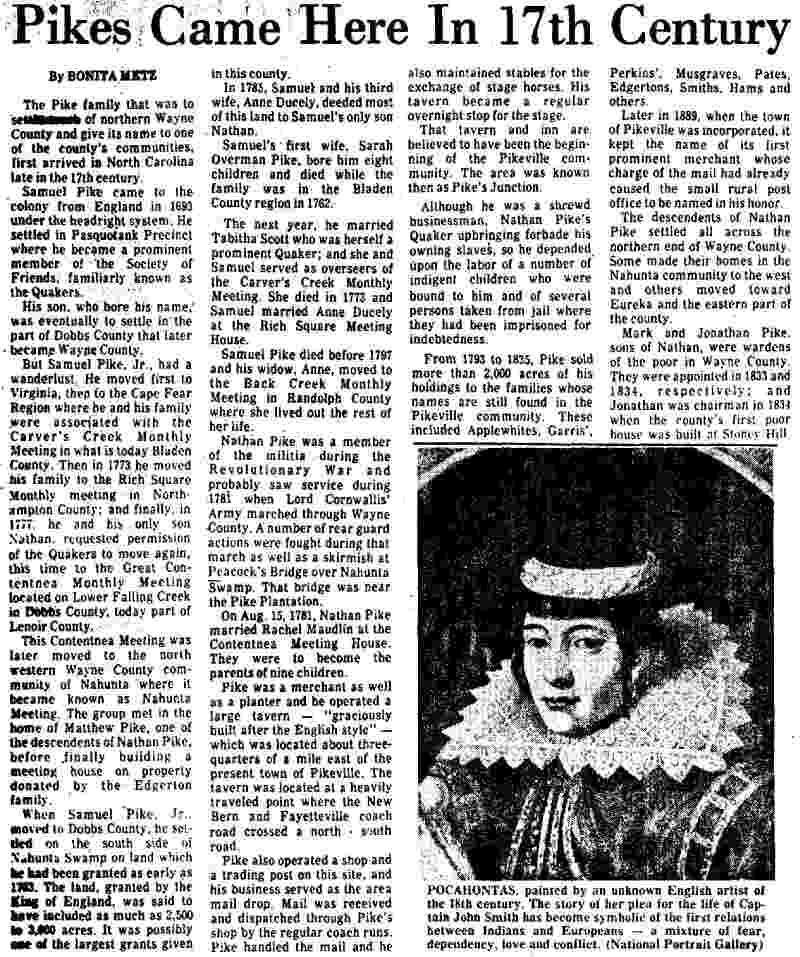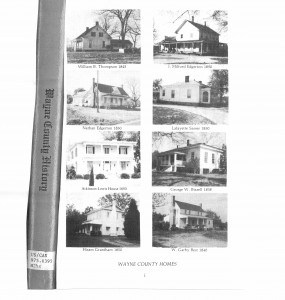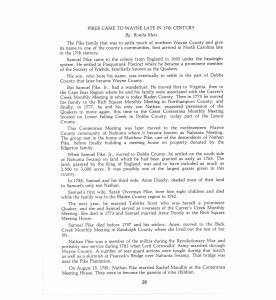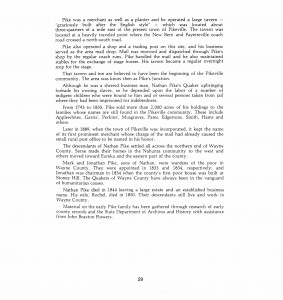Samuel Pike came to the colony from England in 1 693 under the headright system. He settled in Pasquotank Precinct where he became a prominent member of the Society of Friends, familiarly known as the Quakers.
His son, who bore his name, was eventually to settle in the part of Dobbs County that later became Wayne County.
But Samuel Pike, Jr. had a wanderlust. He moved first to Virginia, then to the Cape Fear Region where he and his family were associated with the Carver’s Creek Monthly Meeting in what is today Bladen County. Then in 1773 he moved his family to the Rich Square Monthly Meeting in Northampton County; and finally, in 1777, he and his only son Nathan, requested permission of the Quakers to move again, this time to the Great Contentnea Monthly Meeting located on Lower Falling Creek in Dobbs County, today part of the Lenoir County.
This Contentnea Meeting was later moved to the northwestern Wayne County community of Nahunta where it became known as Nahunta Meeting. The group met in the home of Matthew Pike, one of the descendants of Nathan Pike, before finally building a meeting house on property donated by the Edgerton family.
When Samuel Pike, Jr., moved to Dobbs County, he settled on the south side of Nahunta Swamp on land which he had been granted as early as 17 63. The land, granted by the King of England, was said to have included as much as 2, 500 t0 3,000 acres. It was possibly one of the largest grants given in this county.
In 1785 , Samuel and his third wife, Anne Ducely, deeded most of their land to Samuel’s only son Nathan.
Samuel’s first wife, Sarah Overman Pike, bore him eight children and died while the family was in the Bladen County region in 1762.
The next year, he married Tabitha Scott who was herself a prominent Quaker; and she and Samuel served as overseers of the Carver’s Creek Monthly Meeting. She died in 1773 and Samuel married Anne Ducely at the Rich Square Meeting House.
Samuel Pike died before 1797 and his widow, Anne, moved to the Back Creek Monthly Meeting in Randolph County where she lived out the rest of her life.
Nathan Pike was a member of the militia during the Revolutionary War and probably saw service during 1781 when Lord Cornwallis’ Army marched through Wayne County. A number of rear guard actions were fought during that march as well as a skirmish at Peacock’s Bridge over Nahunta Swamp. That bridge was near the Pike Plantation.
On August 1 5, 1781, Nathan Pike married Rachel Maudlin at the Contentnea Meeting House. They were to become the parents of nine children.
Pike was a merchant as well as a planter and he operated a large tavern – spaciously built after the English style’ — which was located about three-quarters of a mile east of the present town of Pikeville. The tavern was located at a heavily traveled point where the New Bern and Fayetteville coach road crossed a north-south road.
Pike also operated a shop and a trading post on this site, and his business served as the area mail drop. Mail was received and dispatched through Pike’s shop by the regular coach runs. Pike handled the mail and he also maintained stables for the exchange of stage horses. His tavern became a regular overnight stop for the stage.
That tavern and inn are believed to have been the beginning of the Pikeville community. The area was known then as Pike’s Junction.
Although he was a shrewd business man, Nathan Pike‘s Quaker upbringing forbade his owning slaves, so he depended upon the labor of a number of indigent children who were bound to him and of several persons taken from jail where they had been imprisoned for indebtedness.
From 1793 to 1835, Pike sold more than 2,000 acres of his holdings to the families whose names are still found in the Pikeville community. These include Applewhites, Garris’, Perkins’ Musgraves, Pates, Edgertons, Smith, Hams and others.
Later in 1889, when the town of Pikeville was incorporated, it kept the name of its first prominent merchant whose charge of the mail had already caused the small rural post office to be named in his honor.
The descendants of Nathan Pike settled all across the northern end of Wayne County. Some made their homes in the Nahunta community to the west and others moved toward Eureka and the eastern part of the county.
Mark and Jonathan Pike, sons of Nathan, were wardens of the poor in Wayne County. They were appointed in 1833 and 1834, respectively; and Jonathan was chairman in 1834 when the county’s first poor house was built at Stoney Hill. The Quakers of Wayne County have always been in the vanguard of humanitarian causes.
Nathan Pike died in 1844 leaving a large estate and an established business name. His wife, Rachel, died in 1850. Their descendants still live and work in Wayne County.
Material on the early Pike family has been gathered through research of early county records and the State Department of Archives and History with assistance from John Braxton Flowers.
Source: Family History Center, Salt Lake City, Utah



